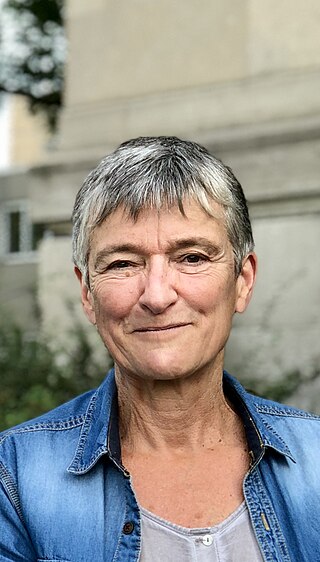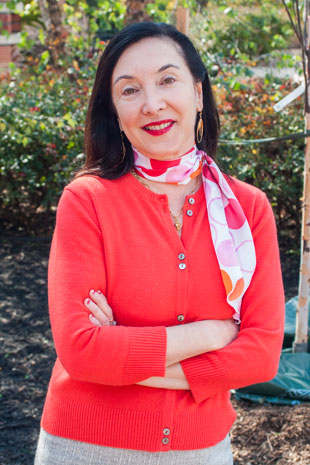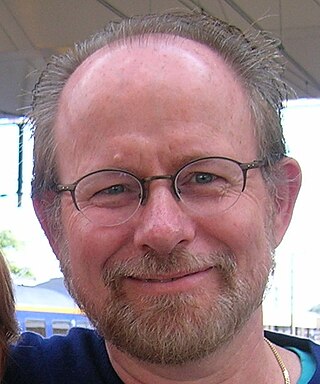Related Research Articles

American Sign Language (ASL) is a natural language that serves as the predominant sign language of deaf communities in the United States and most of Anglophone Canada. ASL is a complete and organized visual language that is expressed by employing both manual and nonmanual features. Besides North America, dialects of ASL and ASL-based creoles are used in many countries around the world, including much of West Africa and parts of Southeast Asia. ASL is also widely learned as a second language, serving as a lingua franca. ASL is most closely related to French Sign Language (LSF). It has been proposed that ASL is a creole language of LSF, although ASL shows features atypical of creole languages, such as agglutinative morphology.
Language acquisition is the process by which humans acquire the capacity to perceive and comprehend language. In other words, it is how human beings gain the ability to be aware of language, to understand it, and to produce and use words and sentences to communicate.

Sign languages are languages that use the visual-manual modality to convey meaning, instead of spoken words. Sign languages are expressed through manual articulation in combination with non-manual markers. Sign languages are full-fledged natural languages with their own grammar and lexicon. Sign languages are not universal and are usually not mutually intelligible, although there are also similarities among different sign languages.
Metalinguistics is the branch of linguistics that studies language and its relationship to other cultural behaviors. It is the study of dialogue relationships between units of speech communication as manifestations and enactments of co-existence. Jacob L. Mey in his book, Trends in Linguistics, describes Mikhail Bakhtin's interpretation of metalinguistics as "encompassing the life history of a speech community, with an orientation toward a study of large events in the speech life of people and embody changes in various cultures and ages."
Bimodal bilingualism is an individual or community's bilingual competency in at least one oral language and at least one sign language, which utilize two different modalities. An oral language consists of a vocal-aural modality versus a signed language which consists of a visual-spatial modality. A substantial number of bimodal bilinguals are children of deaf adults (CODA) or other hearing people who learn sign language for various reasons. Deaf people as a group have their own sign language(s) and culture that is referred to as Deaf, but invariably live within a larger hearing culture with its own oral language. Thus, "most deaf people are bilingual to some extent in [an oral] language in some form". In discussions of multilingualism in the United States, bimodal bilingualism and bimodal bilinguals have often not been mentioned or even considered. This is in part because American Sign Language, the predominant sign language used in the U.S., only began to be acknowledged as a natural language in the 1960s. However, bimodal bilinguals share many of the same traits as traditional bilinguals, as well as differing in some interesting ways, due to the unique characteristics of the Deaf community. Bimodal bilinguals also experience similar neurological benefits as do unimodal bilinguals, with significantly increased grey matter in various brain areas and evidence of increased plasticity as well as neuroprotective advantages that can help slow or even prevent the onset of age-related cognitive diseases, such as Alzheimer's and dementia.

Lydia White is a Canadian linguist and educator in the area of second language acquisition (SLA). She is James McGill Professor Emeritus of Linguistics at McGill University.
The generative approach to second language (L2) acquisition (SLA) is a cognitive based theory of SLA that applies theoretical insights developed from within generative linguistics to investigate how second languages and dialects are acquired and lost by individuals learning naturalistically or with formal instruction in foreign, second language and lingua franca settings. Central to generative linguistics is the concept of Universal Grammar (UG), a part of an innate, biologically endowed language faculty which refers to knowledge alleged to be common to all human languages. UG includes both invariant principles as well as parameters that allow for variation which place limitations on the form and operations of grammar. Subsequently, research within the Generative Second-Language Acquisition (GenSLA) tradition describes and explains SLA by probing the interplay between Universal Grammar, knowledge of one's native language and input from the target language. Research is conducted in syntax, phonology, morphology, phonetics, semantics, and has some relevant applications to pragmatics.
Leonard Katz (1938–2017) was an American experimental psychologist, born in Boston, Massachusetts. He was a professor of psychology at the University of Connecticut (1965–2006) and then professor emeritus until 2017. He was a Fellow of the American Association for the Advancement of Science and the Association for Psychological Science.

Laura-Ann Petitto is a cognitive neuroscientist and a developmental cognitive neuroscientist known for her research and scientific discoveries involving the language capacity of chimpanzees, the biological bases of language in humans, especially early language acquisition, early reading, and bilingualism, bilingual reading, and the bilingual brain. Significant scientific discoveries include the existence of linguistic babbling on the hands of deaf babies and the equivalent neural processing of signed and spoken languages in the human brain. She is recognized for her contributions to the creation of the new scientific discipline, called educational neuroscience. Petitto chaired a new undergraduate department at Dartmouth College, called "Educational Neuroscience and Human Development" (2002-2007), and was a Co-Principal Investigator in the National Science Foundation and Dartmouth's Science of Learning Center, called the "Center for Cognitive and Educational Neuroscience" (2004-2007). At Gallaudet University (2011–present), Petitto led a team in the creation of the first PhD in Educational Neuroscience program in the United States. Petitto is the Co-Principal Investigator as well as Science Director of the National Science Foundation and Gallaudet University’s Science of Learning Center, called the "Visual Language and Visual Learning Center (VL2)". Petitto is also founder and Scientific Director of the Brain and Language Laboratory for Neuroimaging (“BL2”) at Gallaudet University.
Stephen Crain is the director of the ARC Centre of Excellence in Cognition and its Disorders (CCD), and a distinguished professor at Macquarie University in the Department of Linguistics. He is a well-known researcher specializing in language acquisition, focusing specifically on syntax and semantics. Crain views language acquisition as based on language-specific faculties, and he conducts his research in the tradition of Chomskyan generative grammar. Recently, Crain has proposed that language is based on a universal logical system, and he has begun to explore the neural correlates of language acquisition from a cross-linguistic perspective using magnetoencephalography (MEG). Crain received a BA in philosophy from the University of California, Los Angeles in 1971 and a PhD in cognitive science with an emphasis in linguistics from the University of California, Irvine in 1980. Crain was employed as a professor of linguistics at the University of Connecticut from 1986 to 1995. During that time he was also a senior scientist at Haskins Laboratories in New Haven, Connecticut. After leaving UConn, he took a position as professor of linguistics at the University of Maryland, College Park, from 1995 to 2003, before accepting a position as a professor of cognitive science at Macquarie in 2004, where he has remained since. He was deputy director of the Macquarie Centre for Cognitive Science from 2004 until 2010, and director of the Centre for Language Sciences from 2007 until 2010. He led the successful bid for an ARC Centre of Excellence in Cognition and its Disorders, which is funded from 2011 until 2017.
Melissa Bowerman was a leading researcher in the area of language acquisition. From 1982 to 2007, she was a senior research fellow at the Max Planck Institute for Psycholinguistics.
In sign languages, the term classifier construction refers to a morphological system that can express events and states. They use handshape classifiers to represent movement, location, and shape. Classifiers differ from signs in their morphology, namely that signs consist of a single morpheme. Signs are composed of three meaningless phonological features: handshape, location, and movement. Classifiers, on the other hand, consist of many morphemes. Specifically, the handshape, location, and movement are all meaningful on their own. The handshape represents an entity and the hand's movement iconically represents the movement of that entity. The relative location of multiple entities can be represented iconically in two-handed constructions.
Language acquisition is a natural process in which infants and children develop proficiency in the first language or languages that they are exposed to. The process of language acquisition is varied among deaf children. Deaf children born to deaf parents are typically exposed to a sign language at birth and their language acquisition follows a typical developmental timeline. However, at least 90% of deaf children are born to hearing parents who use a spoken language at home. Hearing loss prevents many deaf children from hearing spoken language to the degree necessary for language acquisition. For many deaf children, language acquisition is delayed until the time that they are exposed to a sign language or until they begin using amplification devices such as hearing aids or cochlear implants. Deaf children who experience delayed language acquisition, sometimes called language deprivation, are at risk for lower language and cognitive outcomes. However, profoundly deaf children who receive cochlear implants and auditory habilitation early in life often achieve expressive and receptive language skills within the norms of their hearing peers; age at implantation is strongly and positively correlated with speech recognition ability. Early access to language through signed language or technology have both been shown to prepare children who are deaf to achieve fluency in literacy skills.
Ted Supalla is a deaf linguist whose research centers on sign language in its developmental and global context, including studies of the grammatical structure and evolution of American Sign Language and other sign languages.
Rebecca Treiman is an American psychologist. She is the Burke and Elizabeth High Baker Professor of Child Developmental Psychology at Washington University in St. Louis and head of the Reading and Language Lab there. Treiman's research focuses on spelling and reading, and especially on the linguistic factors that affect these processes.

Wendy Sandler is an American-Israeli linguist who is known for her research on the phonology of Sign Languages.

Harry van der Hulst is full professor of linguistics and director of undergraduate studies at the department of linguistics of the University of Connecticut. He has been editor-in-chief of the international SSCI peer-reviewed linguistics journal The Linguistic Review since 1990 and he is co-editor of the series ‘Studies in generative grammar’. He is a Life Fellow of the Netherlands Institute for Advanced Study, and a board member of the European linguistics organization GLOW.
Marit Kristine Richardsen Westergaard is a Norwegian linguist, known for her work on child language acquisition and multilingualism.
Karen Denise Emmorey is a linguist and cognitive neuroscientist known for her research on the neuroscience of sign language and what sign languages reveal about the brain and human languages more generally. Emmorey holds the position of Distinguished Professor in the School of Speech, Language, and Hearing Sciences at San Diego State University, where she directs the Laboratory for Language and Cognitive Neuroscience and the Center for Clinical and Cognitive Neuroscience.
Mira Ariel is a professor of linguistics at Tel Aviv University, specializing in pragmatics. A pioneer of the study of information structure, she is best known for creating and developing Accessibility Theory.
References
- ↑ "Teaching and Service". University of Connecticut. Archived from the original on 2015-01-08. Retrieved 2015-06-01.
- ↑ "Professional Background". Archived from the original on September 20, 2015. Retrieved June 2, 2015.
- ↑ "Diane Lillo-Martin - Google Scholar Citations". scholar.google.com. Retrieved 2018-12-20.
- ↑ "Research". homepages.uconn.edu. Archived from the original on 2016-01-30. Retrieved 2015-06-02.
- ↑ Name, Your. "Bimodal Bilingualism". bibibi.uconn.edu. Retrieved 2015-06-02.
- ↑ "Linguistics › University of Connecticut". www.linguistics.uconn.edu. Retrieved 2015-06-02.
- ↑ "Diane Lillo-martin". www.haskins.yale.edu. Retrieved 2015-06-02.
- ↑ "LSA Fellows by Name" . Retrieved June 2, 2015.
- ↑ "Publications". homepages.uconn.edu. Archived from the original on 2015-05-20. Retrieved 2015-06-02.